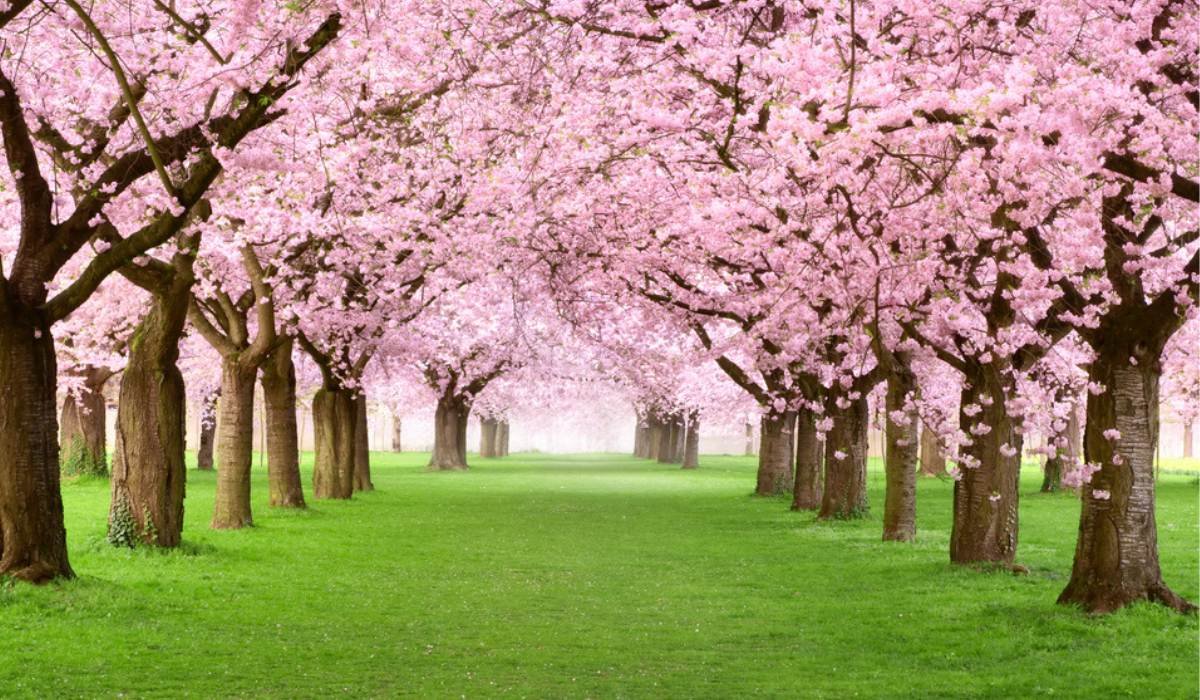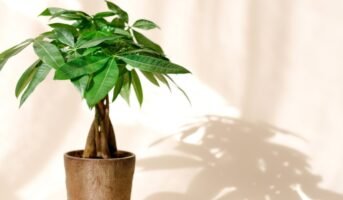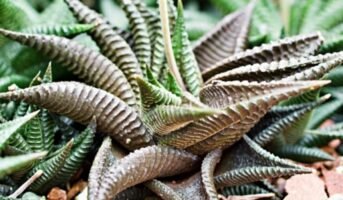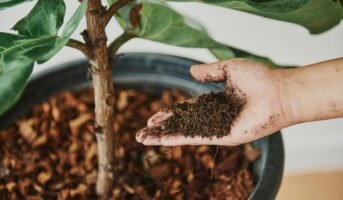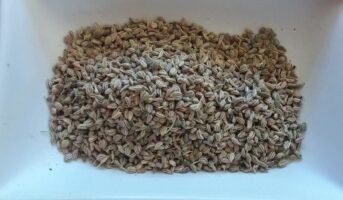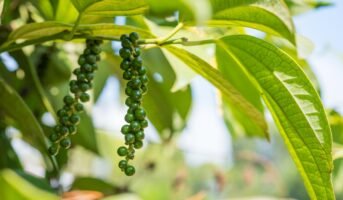Cherry blossom trees (Prunus spp.), also known as Sakura in Japan, are deciduous trees known for their beautiful, delicate flowers that bloom in shades of pink and white. These trees are native to East Asia and are especially popular in Japan. They symbolise the country’s cultural heritage.
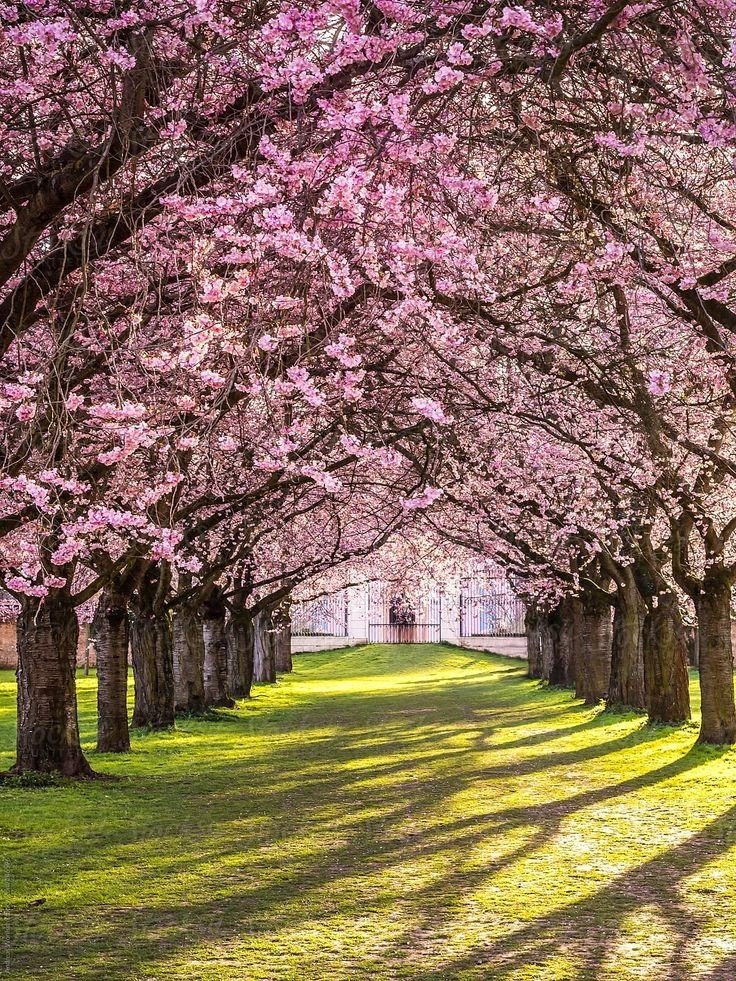
Source: Pinterest
Cherry blossom trees are also popular in several countries, such as the United Nations, South Korea, etc., as ornamental trees and are often planted in gardens, parks, and along streets. The flowers of cherry blossom trees are often used as a symbol of renewal and the fleeting nature of life. In Japan, the cherry blossom season is a time of celebration and festivals, and people often gather to view the flowers and have picnics under the trees.
See also: Casuarina tree: How to grow and care for it?
Cherry blossom tree: Key facts
| Name | Cherry blossom tree |
| Common names | “Sakura” or “Japanese cherry” |
| Family | Rosaceae |
| Origin | East Asia (Japan, China and Korea) |
| Soil | Loamy soil |
| Temperature | Below 41°C |
| Sunlight | Direct sunlight at least 6 hr per day |
| Flowers | Dark pink or white |
| Leaves | Oval leaves with rough edges |
| Indoor/Outdoor | Outdoor |
See also about: SPP Gardens
Cherry blossom tree: Varieties and physical description
Some of the several varieties of cherry blossom trees include:
Yoshino cherry (Prunus x yedoensis)
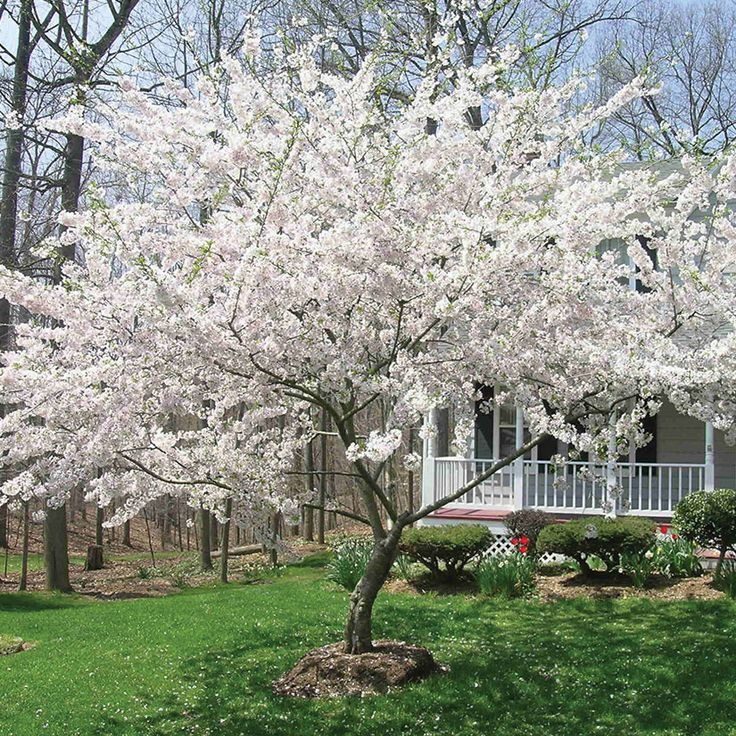
Source: Pinterest
It is the most common cherry blossom tree in Japan and the United States. It has pale pink flowers and is known for its delicate, graceful appearance.
Higan cherry (Prunus subhirtella)
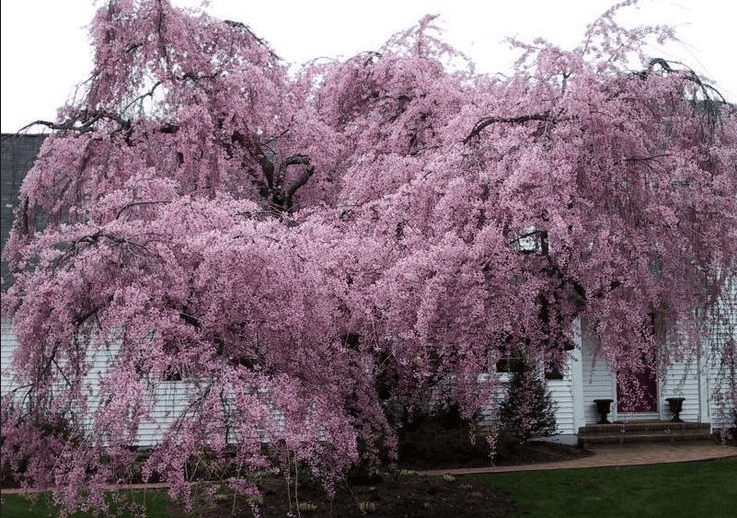
Source: Pinterest
This variety has deep pink flowers and is known for its long-lasting blooms. It is native to Japan and China.
Kwanzan cherry (Prunus serrulata ‘Kwanzan’)

Source: Pinterest
This is a variety of Japanese cherry with double pink flowers and a more robust, upright growth habit. It is frequently used as an ornamental tree in gardens and parks.
Sargent cherry (Prunus sargentii)
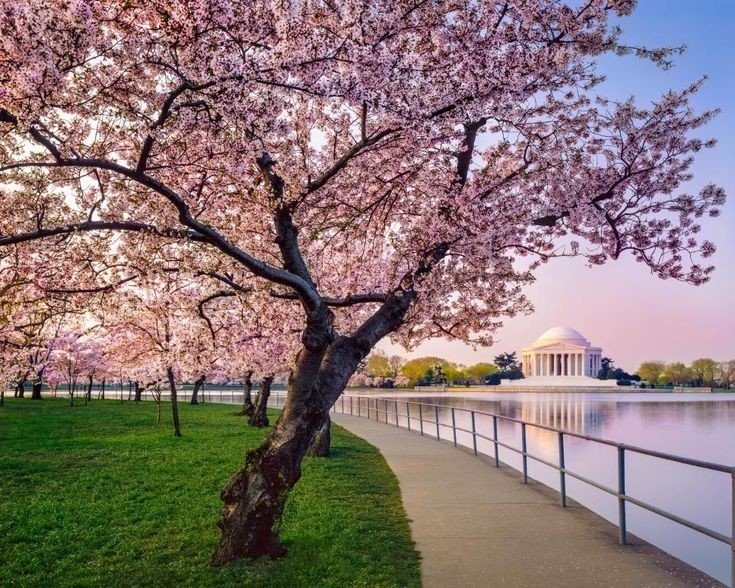
Source: Pinterest
This is a variety of cherry blossom trees with deep pink flowers and a more vigorous growth habit. It is native to Japan and China.
Weeping cherry (Prunus x subhirtella ‘Pendula’)
This variety has pink or white flowers and a weeping habit, with long branches that droop down towards the ground. It is a famous ornamental tree in gardens and parks.
There are many other varieties of cherry blossom trees, each with unique characteristics and beauty. They are popular trees to plant in gardens and parks because of their stunning spring blooms and graceful appearance.
Cherry blossom tree: How to grow?
Cherry blossom trees are popular in gardens and parks due to their delicate, fragrant flowers and attractive form. If you are interested in growing and caring for a cherry blossom tree, here are some tips to keep in mind:
- Choose the right location: Cherry blossom trees prefer full sun, partial shade and well-drained soil. Avoid planting these blossoms in areas with standing water.
- Planting: Cherry blossom trees can be planted in the spring or fall. When planting, dig a hole twice the size of the root ball and mix in compost or other organic matter into the soil. Water the tree well after planting.
- Watering: Water cherry blossom trees regularly, especially during dry spells. Avoid overwatering to prevent root rot.
- Fertilising: Fertilise cherry blossom trees in the spring with a balanced fertiliser. Using too much fertiliser can lead to excessive foliage growth at the expense of flowers.
- Pruning: Prune cherry blossom trees in the late winter or early spring before new growth begins. Remove any damaged or diseased branches and shape the tree as desired.
- Protecting from pests: Cherry blossom trees can be prone to pests such as aphids and scales. To get rid of these pests, use insecticidal soap or oil.
Cherry blossom tree: Maintenance tips
Cherry blossom trees (also known as sakura trees) are popular for their beautiful pink and white flowers that bloom in the spring.
Some tips for taking care of cherry blossom trees are:
- Plant the tree in an area with well-draining soil and full sun to partial shade.
- Water the tree regularly, especially during dry periods.
- Fertilise the tree once a year in the spring using a balanced fertiliser.
- Prune the tree in the early spring or winter to remove any dead or damaged branches.
- Protect the tree from pests and diseases by regularly inspecting it and treating any problems as soon as they are detected.
- Mulch around the tree’s base to help retain moisture and suppress weeds.
Following these tips can help ensure that your cherry blossom tree stays healthy and blooms beautifully in your garden.
Cherry blossom tree: Benefits
Cherry blossom trees are widely cultivated for their beautiful flowers, symbolising spring in many parts of the world. In addition to their aesthetic value, cherry blossom trees have several other benefits.
- Environmental benefits: Cherry blossom trees improve air quality by producing oxygen and absorbing carbon dioxide. They can also provide shade, which can help to cool the surrounding area and reduce energy consumption.
- Social benefits: Cherry blossom trees can create community and bring people together. Many cities host annual cherry blossom festivals, which can promote local tourism and bring people together to celebrate the arrival of spring.
- Health benefits: Cherry blossom trees can positively impact mental health. The sight and smell of their flowers can be calming and uplifting, and spending time in nature has been shown to reduce stress and improve overall well-being.
- Economic benefits: Cherry blossom trees can provide economic benefits through tourism, as many people travel to see them briefly when they bloom. In addition, cherry blossom trees can increase property values and contribute to the overall economic development of a community.
Cherry blossom tree: Toxicity
Cherry blossom trees (Prunus spp.) are not generally considered toxic plants. However, as with all plants, some parts of the cherry blossom tree may cause irritation or allergic reactions in some individuals when touched or ingested. For example, the sap of cherry blossom trees can cause some people skin irritation or allergic reactions. The seeds of some cherry blossom tree species contain small amounts of hydrocyanic acid, which is toxic if ingested in large amounts, but it is not a significant risk for most people.
In general, cherry blossom trees are safe in your yard and can add beauty to your landscape. If you have concerns about the safety of a cherry blossom tree, you should consult with a licensed landscaper or a horticulturist.
Spring Delight: Blooming Blossom tree in full glory


Whimsical Beauty: Dancing blossom tree in the wind


FAQs
When do cherry blossom trees bloom?
Cherry blossom trees typically bloom in the spring, usually in March or April, depending on the region and weather conditions.
Where do cherry blossom trees grow?
Cherry blossom trees are native to Asia and are particularly popular in Japan, where they have been cultivated for centuries. Cherry blossom trees can also be found in other parts of the world, including the United States, Canada, and Europe.
What do cherry blossom trees look like?
Cherry blossom trees have delicate, pink or white flowers that resemble small, single roses. The flowers are usually arranged in clusters and bloom for a short period, usually about two weeks. The leaves of cherry blossom trees are oval-shaped and dark green, and the trees themselves can grow up to 25-30 feet tall.
Are cherry blossom trees edible?
Some cherry blossom trees produce edible fruit, but the fruit of most cherry blossom trees is not considered edible. The edible fruit is typically small, sour, and not very flavorful. The flowers of cherry blossom trees are also not edible.
How long do cherry blossom trees live?
Cherry blossom trees have a relatively short lifespan compared to other tree species. They can live for 20-30 years, but some varieties may only live for 10-15 years.
| Got any questions or point of view on our article? We would love to hear from you. Write to our Editor-in-Chief Jhumur Ghosh at [email protected] |
Housing News Desk is the news desk of leading online real estate portal, Housing.com. Housing News Desk focuses on a variety of topics such as real estate laws, taxes, current news, property trends, home loans, rentals, décor, green homes, home improvement, etc. The main objective of the news desk, is to cover the real estate sector from the perspective of providing information that is useful to the end-user.
Facebook: https://www.facebook.com/housing.com/
Twitter: https://twitter.com/Housing
Email: [email protected]
